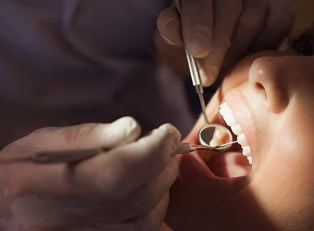Sedation dentistry involves the use medications to reduce anxiety in patients who are normally frightened by dentists or dental work. Additionally, some sedation is used on all patients when they’re undergoing a procedure that would be too painful to experience without some sort of pain-minimizing drug.
There are multiple types of sedation dentistry that are currently used, and choosing the right one depends on a number of factors—including what purpose the sedation is serving and the medical history of the patient involved. Here is a look at these different methods, including what they’re used for and what risks they carry.
Inhaled Sedation
The inhalation of nitrous oxide (a.k.a. laughing gas) is one of the most common types of sedation dentistry. This powerful substance induces feelings of euphoria and minimizes the perception of pain without any lasting or dangerous side effects, which makes it a popular choice among dentists for keeping anxious patients calm or for performing minor procedures, like placing a filling.
Inhaled sedation is typically administered through a mask that covers the nose and is a mixture of 50% nitrous oxide and 50% oxygen. Its effects kick in within minutes of inhalation, and while patients remain conscious, they are much more relaxed and compliant, which makes the dentist’s job much easier. Once the mask has been removed, patients should begin returning to normal within three to five minutes, and most will still be capable of driving themselves home after a short period for recuperation.
While this form of sedation dentistry is one of the safest possible, exposure to nitrous oxide may pose risks for people with certain conditions—like chronic pulmonary disease, middle ear problems, or bowel obstructions. Be sure to consult with your primary care physician before undergoing procedures using inhaled sedation if you suffer from any of these.
Oral Sedation
Oral sedation is another popular choice in sedation dentistry for those with a fear of dental procedures. Like inhaled sedation, many of the oral medications used induce feelings of relaxation and calmness while still allowing the patient to be conscious and somewhat aware of what is going on. Many dentists prefer oral sedation to other methods because it’s easy to administer, patients are receptive to the idea of it, and it’s one of the more cost-effective options around.
One of the most commonly used drugs for oral sedation is diazepam (known more commonly as Valium) because of its long and successful history as a sedative, as well as its long-lasting effects. However, sometimes other medications are used in its place—such as triazolam, zaleplon, lorazepam, hydroxyzine, and midazolam.
While most people have no issues using oral sedation, there is always a possibility for negative side effects. Most commonly these are caused by interactions with other medications a patient is taking or an underlying condition. Because of this, providing the dentist with a thorough medical history is important before agreeing to oral sedation, and as always, consult with your general physician if you have any concerns about its effects.
IV Sedation
IV sedation (also known as “deep” sedation) is one of the most powerful options available to dentists. It’s used both for patients with a severe fear of dentistry but is also common for major oral procedures, like the removal of wisdom teeth. With this method, sedation drugs are administered directly into the veins, meaning that their effects are quite strong and almost instantaneous.
While IV sedation is more powerful than oral or inhaled sedation, patients are still do not go completely “under”—although their awareness of their surroundings will be quite limited. Most people remember little to nothing about their procedure when IV sedation is used. It’s recommended that people who use this method refrain from driving or operating heavy machinery for 24 hours afterwards, as its effects can persist for hours afterwards. It is possible to have an allergic reaction to the medications used in IV sedation, so be sure to discuss your medical history with the dentist before it is administered.



